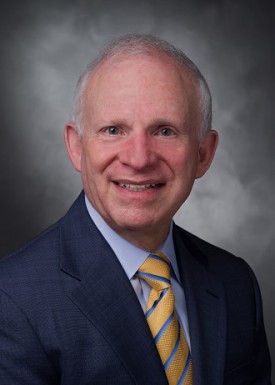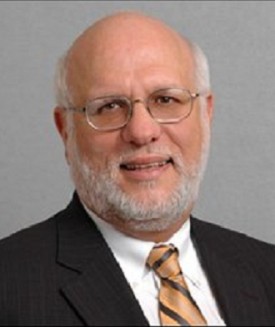For Ongoing ACO Shared Savings, Look Outside Inpatient, Primary Care
Controlling outcomes and costs outside of the network and in the post-acute care space will bring long-term ACO shared savings.

Source: Thinkstock
- Seven years have passed since the Affordable Care Act catalyzed the idea of volume over value in the healthcare industry, paving the way for accountable care organizations (ACOs) to accrue shared shavings while focusing on population health.
Since that time, the number of ACOs has exploded to over 920 organizations contracted with public and private payers. More than 10 percent of the US population now receives care from a provider contracted under an ACO.
The increasing popularity of alternative payment and care delivery models may be due to their potential to reduce overall healthcare spending.
In 2016, ACOs in four Medicare programs decreased costs by $836 million while simultaneously earning quality scores that averaged over 90 percent.
Despite the success of some organizations, however, many more still struggle every year to lower their costs enough to earn shared savings payments.
Less than one-third of ACOs in Medicare’s largest program, the Medicare Shared Savings Program (MSSP), received shared savings payments in 2016.
Compounding the difficulty of succeeding in the value-based care environment is the fact that some programs appear to punish early success.
“As more and more organizations get engaged and reduce their cost of care, it's going to get harder, and the amount of savings is going to be smaller."
Most programs, like Medicare’s original Pioneer model and the Medicare Shared Savings Program (MSSP), primarily calculate spending targets based on historical cost data. Organizations that are already efficient when entering the program may find their benchmarks starting at a target so low that it may be difficult to find additional efficiencies.
Even successful ACOs, like Massachusetts-based Atrius Health, have run into some issues with the methodology. The organization reduced costs and earned shared savings payments in the last three years of its participation in the Pioneer ACO model, but that was not the case in the first two years of the program, explained Rick Lopez, MD, Senior Vice President of Population Health.
“We actually started out as the lowest-cost Pioneer ACO among the five ACOs in Massachusetts,” he said. “We were, in some ways, starting at a disadvantage because we were starting with a per beneficiary per year (PBPY) budget that was the lowest.”
“A lot of the low-hanging fruit had already been taken. In the first couple years, we were pretty much in the noise in terms of savings.”
ACOs can also be victims of their own success. As they continue to lower costs, the financial benchmarks will sink lower, making it difficult for ACOs build on how much they earn for shared savings payments.
“As more and more organizations get engaged and reduce their cost of care, it's going to get harder, and the amount of savings is going to be smaller,” predicted Lee Sacks, MD, Chief Medical Officer at Advocate Health Care in Illinois.
Ross Wilson, MD, FRACP, FCICM, Chief Transformation Officer at NYC Health + Hospitals and CEO of the health system’s ACO, agreed that the continually higher expectations can be challenging. The ACO earned $1.58 million in shared savings in 2016.
“If they [Medicare] hadn’t moved the benchmark downwards, we would have made the same, if not more savings, than we had made in the previous year,” he said.
Meeting lower spending benchmarks presents a major challenge to efficient ACOs. However, Atrius Health, Advocate Health Care, and NYC Health + Hospitals have all managed to build on their success and earn shared savings in Medicare programs for consecutive years.
The ACO leaders attributed their success to leveraging data to track patient care outside of their own networks and offering services outside of the traditional hospital or practice setting, such as post-acute and skilled nursing care.
How Pioneer ACOs Earn Shared Savings, Improve Care Quality
What Are the Benefits of Accountable Care Organizations?
Leveraging data to improve outcomes within the ACO network
Between 55 and 65 percent of patient care may happen out of an ACO’s network, a study of healthcare costs in Massachusetts found.
While some patient leakage is to be expected as individuals seek specialty care unavailable within the network or the convenience of a close-to-home provider, the statistic can be troubling for ACO leaders. Even if the patient receives some of his or her care elsewhere, an ACO is still responsible for the total cost of care and health outcomes of their attributed patients.
“We know what happens when we see a particular patient. But what we don’t know is what happened between those times,” stated NYC Health + Hospital’s Wilson.

Ross Wilson, MD, FRACP, FCICM, Chief Transformation Officer at NYC Health + Hospitals and ACO CEO
Source: NYC Health + HospitalsInternal clinical and cost data was not enough to track patients throughout their entire healthcare journey. Wilson and his colleagues needed more information on patient habits.
The organization called on CMS to supplement the ACO’s information with claims data, including the utilization rates and costs of out-of-network care.
“The plan data enabled us to build a fairly full picture of how patients were getting their care, and where they were getting their care. It was strategically important when they were getting their care outside of our system,” he said.
The data revealed that at least one-third of attributed patients was seeking a significant amount of care outside of the ACO’s network. Wilson observed that that care was oftentimes duplicated or unnecessary, such as an MRI that had already been performed by an ACO-affiliated provider.
Understanding where attributed patients received care not only helped NYC Health + Hospitals to eliminate wasteful and unnecessary services, but it also allowed the ACO to highlight potential care gaps within their network.
“We were able to identify what it was about our network that didn’t satisfy the patient’s needs and drove them to go somewhere else,” said Wilson. “Was it simply geography, because they needed an ED one day when they were acutely ill? Or was there something about the care we provided that actually fell short of their needs?”
NYC Health + Hospitals armed their affiliated providers with the data to ensure clinicians understood patient needs and delivered care that their patients wanted. Each facility within the ACO network appointed a staff member to an ACO lead position. That person’s job was to get the right information to the right clinicians or staff and make sure that providers understood where care gaps may exist.
“Those ACO leads became the connection between the centralized data and the individual physician treating patients,” Wilson said. “And that ACO lead network has turned out to be our learning network - a nurturing network to actually improve the care.”
Good Data, Better Value-Based Care Can Boost Population Health
What Big Data, EHR Vendors Do Accountable Care Organizations Use?
Developing partnerships outside of the hospital, primary care environment
As NYC Health + Hospitals learned, patients do not always make healthcare decisions that align with the ACO’s goals. Patients can get sick or require healthcare services when their primary care provider’s office is closed. Or they may choose to go to the expensive emergency department even if their illness or injury does not require the intensive service.
ACOs should understand where and why their patients are seeking care. Once the organization gains visibility into care utilization patterns, leaders can develop innovative partnerships with other providers outside of the hospital or practice to better control costs while ensuring high-quality care options.
At Advocate Health Care, one solution came in the form of a partnership with Walgreens.
“We have a network of 56 walk-in clinics that are situated inside Walgreens drug stores,” Sacks explained. “We are out in the community for extended hours, 7 days a week as an alternative when a physician practice isn't available. Our medical group has advanced practice nurses in all of their large sites for walk-in, unscheduled appointments.”

Lee Sacks, MD, Advocate Health Care's Executive VP and Chief Medical Officer
Source: Advocate Health CareThe walk-in clinics meet patient demand for more convenient healthcare services, preventing unnecessary utilization of higher-cost care.
“Over time, our patients are coming to appreciate that if they have an acute or urgent problem that isn't life threatening, they will be seen by someone even without an appointment,” he said. “We’re doing a better job on the outpatient side with chronic conditions like diabetes or heart failure. They don't generate as many admissions as they used to.”
Additionally, forward-looking organizations are starting to focus on the post-acute space for cost savings as the inner workings of the ACOs become more efficient.
Since providers are still on the line financially and clinically for what happens to their patients after they are discharged or leave the office, referring patients to a post-acute care partner can help ACOs prevent hospital readmissions or other costly events.
However, organizations need to be certain that their providers are discharging patients to high-quality post-acute facilities.
The post-acute care space is notorious for cost and care quality performance variations. Medicare spends almost $60 billion per year on post-acute services, but this spending could be cut by nearly 75 percent if there were fewer variations in care quality, the Institute of Medicine believes.
For example, top-performing skilled nursing facilities (SNFs) averaged a length of stay of fewer than 24 days for Medicare beneficiaries, whereas low-performing facilities had an average of over 34 days, a 2014 New England Journal of Medicine study found, equating to a $4000 difference in costs per admission.
To guarantee that their attributed patients only receive high-value post-acute care, Advocate Health Care developed a network of preferred SNFs. The ACO supplies the facilities with advanced practice clinicians who help care for attributed patients.
“This has reduced complications and hospital readmissions, and shortened the length of stay in the skilled nursing facilities by about 7 days, which was roughly $500 a day,” Sacks said. “In the last year, we've also seen a small but steady reduction in the use of the inpatient hospital and emergency department, which are the most expensive services that we provide.”
Sacks noted that Advocate Health Care does not own or manage the preferred SNFs in any way. Owning post-acute care facilities brings a host of challenges. Public and private payers tend to reimburse less for post-acute services compared to hospital-level care, making it harder to justify purchasing a post-acute care facility. Post-acute care organizations also face different regulatory requirements than hospitals.
Atrius Health has used a similar strategy. The ACO embedded SNF experts, who were typically nurse practitioners, in preferred facilities. After seeing a 15 percent improvement in length of stay and millions in savings, Atrius Health is expanding its post-acute care strategy to home health and hospice through its subsidiary, Visiting Nurse Association (VNA) Care.
VNA Care sends providers to patient homes for home health, palliative, hospice, and supportive care services. The strategy allows Atrius to develop one-on-one relationships with their patients and guarantee that high-risk patients receive care from affiliated providers when they need services, explained Lopez, VNA Care’s Chief Medical Officer.

Rick Lopez, MD, CMO of VNA Care and Senior VP of Population Health for Atrius Health
Source: Atrius HealthVNA Care operates the Care in Place program, which connects nurses with high-risk elderly patients.
“This program primarily focused on frail patients over the age of 65 who call into one of our offices, are speaking to a nurse, and have a problem,” he said. “It's clear to the nurse that it would be good for them to be seen, but perhaps the patient can't come into the office because their daughter isn't available, or they have no transportation, or they're not feeling up to it.”
“Typically, the response will be, ‘Well, we'll call an ambulance and go to the emergency room,’ which means for a lot of these elderly patients, they get admitted.”
Instead, the program deploys a nurse to the patient’s home within two hours. Nurses perform an assessment and collaborate with geriatric nurse practitioners in the office to develop an action plan.
“We've had significant savings because we've looked at what would have happened in these cases if the nurse didn't make a hands-on evaluation of the patient and what would have been the likelihood the patient would have gone to the emergency room and had admission,” Lopez said.
VNA Care also helps the ACO to better coordinate care across other programs in the organization. For example, Atrius Health runs a total joint replacement program in collaboration with VNA Care.
“We have a physical therapist go into the patient's home, make a home assessment, and educate the patient on what to expect,” he said. “Then, when the patient has their total joint replacement, they go directly home to begin rehab with VNA Care instead of going to a skilled nursing facility for a seven or ten-day length of stay.”
Qualifying for shared savings payments is a continuous process for ACOs. Ideally, organizations should be decreasing total care costs more and more each year. But at some point, organizations will have acted on the more obvious cost savings opportunities within their organizations.
Looking beyond the hospitals and primary care practices within an ACO’s network is the next frontier for organizations seeking shared savings payments. Excessive patient leakage and low-value post-acute care partners can easily spike healthcare costs, even if ACO providers delivering the highest quality care at the lowest possible costs.
ACOs should consider where their networks are failing to meet patient demands and how their providers can partner with the resources in the community to fill gaps with high-value care. Expanding beyond the hospital and practice will be the next steps for ACO success, Wilson stated.
“With an ACO model, you can’t keep taking branches off the tree,” he said. “Eventually, the tree is no longer. So, we are looking to see what the next steps are as we use these learning opportunities for value-based purchasing. What CMS chooses to do with the benchmarks or not will really make a difference to see whether this ACO model, in and of itself, is going to be effective.”
Importance of Post-Acute Alignment, Integration to Value-Based Care
How Palomar Health Created a High-Value Post-Acute Care Network
